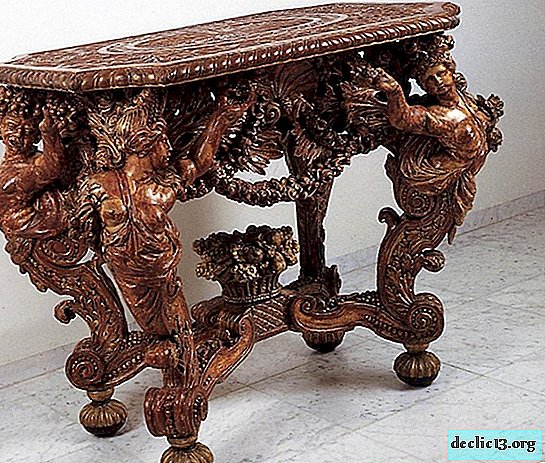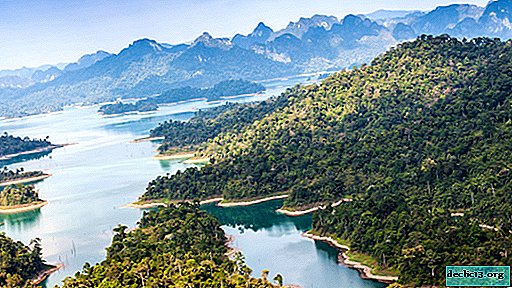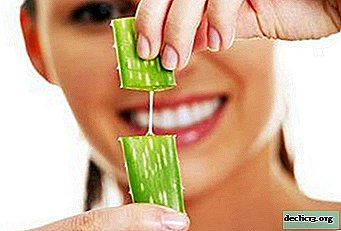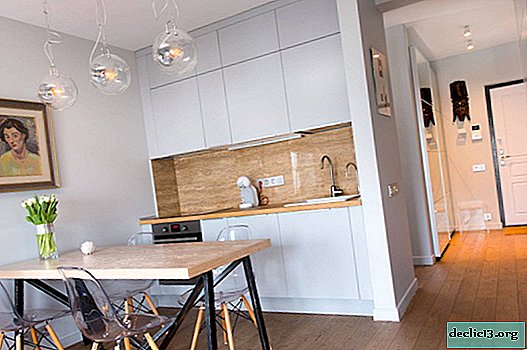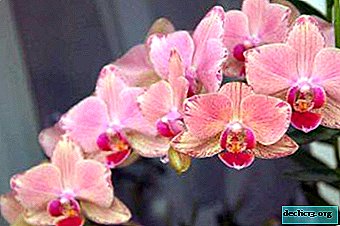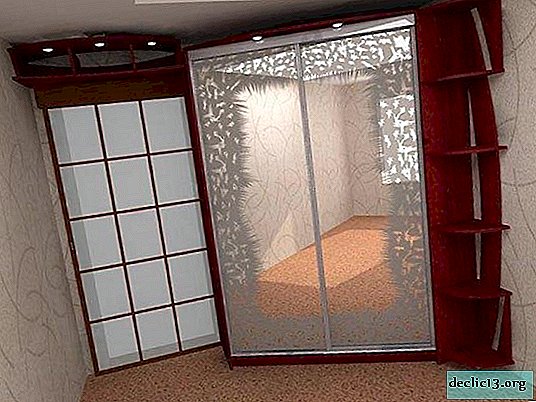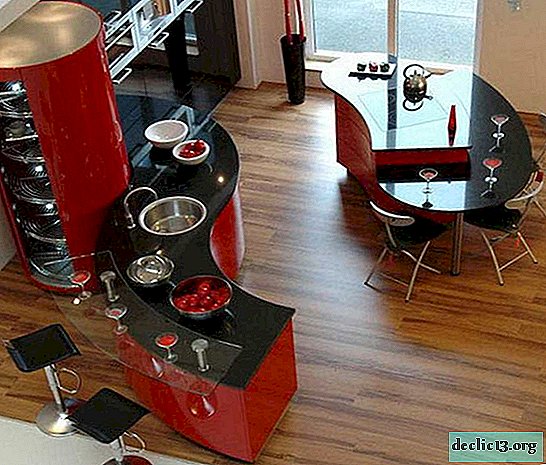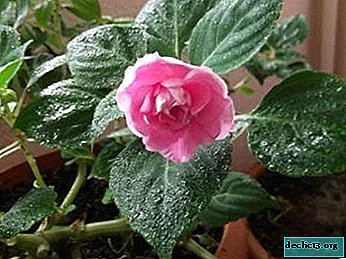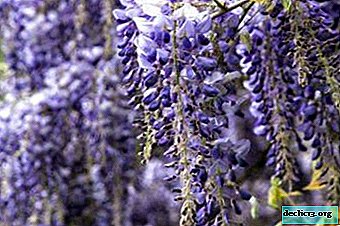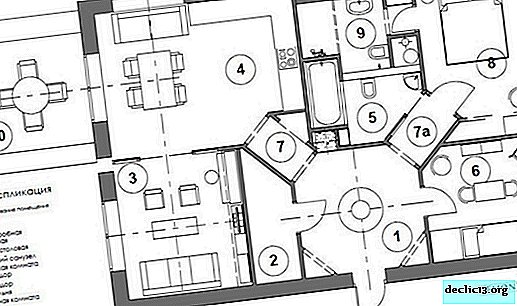How to choose a substrate for orchids?
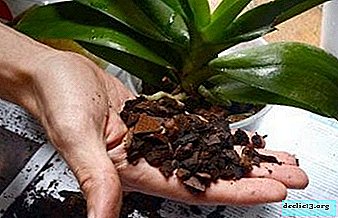
The first few thousand orchids brought to our continent died.
After all, the Europeans planted them in the ground. And only now everyone knows that orchids are exotic plants, their usual habitat is tropical forests, therefore, the soil for the plant should be chosen suitable.
Now we will learn how to choose it and cook it yourself for various varieties of orchids.
What it is?
By substrate is meant a soil mixture that consists of various components. The elements of the mixture are of natural and artificial origin. The basis of artificial substrates is made up of mineral and synthetic materials, namely: polystyrene fibers, mineral wool, expanded clay. Natural mixtures are based on the following components:
- pine bark;
- moss;
- sand;
- peat;
- deciduous;
- coniferous land;
- coconut peel;
- compost;
- perlite;
- humus.
About whether it is possible to plant an orchid in ordinary earth, read in this material.
What is it used for?
 How to use the substrate component? In today's market, a sufficient number of all kinds of soil mixtures. However All soil mixtures have different purposes:
How to use the substrate component? In today's market, a sufficient number of all kinds of soil mixtures. However All soil mixtures have different purposes:
- for growing seedlings of vegetable crops;
- supplement for planting fruit seedlings;
- for storing tubers;
- planting and replanting indoor flowers of various varieties;
- rooting cuttings.
The different composition of the substrate has different goals.
Reference! The soil can be intended for adding, for feeding the plant, updating the old soil, as a component for the soil, or directly for the full planting of a flower.Requirements for it
The criteria for choosing a soil mixture for indoor flowers are the same. However, the root system of the orchid is unique. Due to the fact that the roots are covered with a moisture-absorbing layer, similar to a sponge, orchids can accumulate and store moisture. But this layer should not always be wet. Giving liquid and nutrients to the plant as needed, the roots continue to breathe and remain dry. Given the specifics of the root system, orchids need a substrate that meets such requirements as:
- water and air permeability;
- friability;
- ease;
- optimum moisture capacity;
- non toxicity;
- has a long decomposition process;
- non-acidic environment, pH 5.5-6.0.
What to choose: ready-made or home-made?
 In garden shops, there is a considerable selection of various soil mixtures for orchids. When buying a substrate, it is worth carefully reading the product description on the package:
In garden shops, there is a considerable selection of various soil mixtures for orchids. When buying a substrate, it is worth carefully reading the product description on the package:
- the purpose of the soil for which plants is suitable;
- nutrient composition and soil pH;
- mixture components;
- application tips.
The best option when the finished substrate is intended directly for orchids.
The main components:
- pine bark;
- moss;
- charcoal;
- expanded clay granules;
- fern roots.
Unfortunately, even in trusted stores, you might not be lucky to buy a low-quality product. To avoid this, as well as to save, the substrate for orchids is prepared independently.
- First of all, necessary pine bark. This is the main component that is easy to find in a pine forest, on fallen trees. The bark should be crushed to 2-3 cm. It is advised to warm it in the oven for a couple of minutes at a minimum temperature, to remove harmful insects.
- The second ingredient is moss sphagnum. In the spring, after the complete melting of snow, it is collected in the lowlands. Moss has bactericidal and moisture-accumulating properties. Use fresh and dry.
- The next important element is fern rootsthat contain many useful substances. Add to the mixture dry.
- Charcoal easy to find in the ashes. Wood ash is required in the same size as other components.
- Another component is expanded clay. This is a common, inexpensive, and lightweight material. Granules are excellent as drainage (for more details about whether drainage is needed for an orchid and which one to choose, see here).
It is not necessary to collect all the ingredients of the substrate yourself; they can be bought separately in specialized stores. Good production of natural material from the manufacturer "Auriki Gardens". All that remains to be done is to mix.
Details about what is better to make at home or to buy ready-made soil for an orchid, as well as what the correct composition of the soil mixture should be, read here.
Varieties of purchased mixtures
Now the ready-made soil mixture for orchids is not a scarce commodity, which is sold in garden and flower shops. All of them have approximately the same composition, but different manufacturers and, accordingly, the cost.
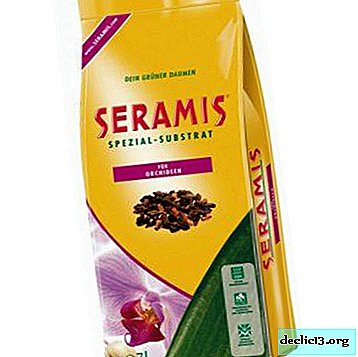 Seramis - The substrate is designed specifically for orchids. The composition includes clay granules of large size, pine bark and micronutrients.
Seramis - The substrate is designed specifically for orchids. The composition includes clay granules of large size, pine bark and micronutrients.Components provide adequate ventilation to the roots, water balance, promote active growth. The soil content in the package is 2.5 liters, the price is 950 rubles.
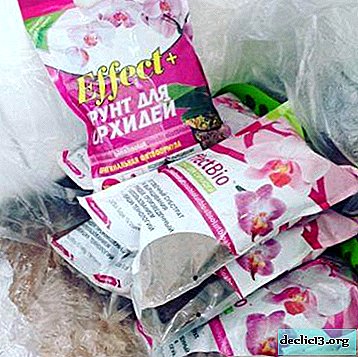 The Bio Start Effect - Russian soil mixture, made exclusively from natural, natural components.
The Bio Start Effect - Russian soil mixture, made exclusively from natural, natural components.The substrate is fine-grained, the size of the fraction is 8-13 mm. The product is completely ready for use, does not require additional sterilization. The volume of 2 liters, the cost of 350 rubles.
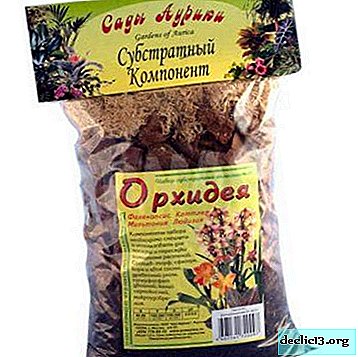 Gardens of Auriki for orchids pros. The planting mixture in the composition has: wood ash, pine bark moss-sphagnum, coconut chips and fiber. The amount of substrate is designed for a pot with a capacity of up to 1.7 liters.
Gardens of Auriki for orchids pros. The planting mixture in the composition has: wood ash, pine bark moss-sphagnum, coconut chips and fiber. The amount of substrate is designed for a pot with a capacity of up to 1.7 liters.Before use, all components should be displaced. Coconut fiber can be used as drainage. The cost of the set is 100 rubles.
How to improve?
 Pre-mixed soil mixes often contain a large percentage of peat or sheet land. Due to waterlogged land, rotting processes are rapidly developing. When transplanting, the roots with a compacted layer of soil fall off the plant. It is advisable to remove excess peat.
Pre-mixed soil mixes often contain a large percentage of peat or sheet land. Due to waterlogged land, rotting processes are rapidly developing. When transplanting, the roots with a compacted layer of soil fall off the plant. It is advisable to remove excess peat.
This is done using a large sieve or colander with large holes. Sift the substrate, removing peat as much as possible. Then we dilute the mixture with a pine bark (more about which bark can be used for orchids and how to prepare it yourself, read here). The resulting soil is suitable for planting orchids.
Watch a video on how to improve purchased orchid primer.
Step-by-step cooking instructions
In flower shops 90% of the total number of orchids are epiphytic varieties:
- dendrobium;
- Cattleya;
- lycasts;
- phalaenopsis;
- Cumbria
- zygopetalum;
- masdevallia.
For these plants, capacity is important mainly for maintaining an upright position, and then for nutrition and obtaining life-giving moisture. Hence, epiphytes do not need land, a sufficiently groundless substrate is enough.
To do this, take:
- plastic flowerpot with drainage holes;
- we put expanded clay or coconut fiber on the bottom;
- we prepare the components of the mixture: pine bark, ash, moss, fern roots, mineral baking powder (vermiculite, perlite);
- we take the components in equal proportions;
- after mixing, fill the prepared container with the substrate.
Mixtures have various variations. For example, combining 1 part of charcoal and 5 parts of bark, or moss-sphagnum, ash and slivers of bark in a ratio of 2: 1: 5.
The remaining 10% are terrestrial orchids: cymbidium and paphiopedilum. Depending on this classification, plants need different soil.
 Terrestrial varieties require enhanced nutrition. The following soil composition is suitable for them, which is prepared as follows:
Terrestrial varieties require enhanced nutrition. The following soil composition is suitable for them, which is prepared as follows:
- put in a pot a pine bark of an average fraction of 1-2 cm;
- charcoal of the same size;
- moss and peat;
- mix everything thoroughly;
- expanded clay is poured down the flowerpot.
You can also prepare a substrate from the prepared soil for orchids, adding moss and part of the deciduous land.
The consequences of improperly selected soil
Sometimes orchids do not look healthy, foliage begins to turn yellow and dry, damage to the roots is noticeable, the flowering period is delayed, and if it blooms, the inflorescences are small and not bright. The causes of such phenomena and diseases are the wrong choice or outdated soil.
Over time, the substrate, when plants are grown in it, becomes more dense, depleted, especially without the use of top dressing.
Attention! It is recommended that the soil be changed and updated every 2 years. It is also important to choose the right substrate for a particular type of orchid, otherwise there will be problems with the plant's health.Orchids are tropical plants that have to adapt in temperate climates. Optimally selected soil is one of the determining factors in their life and growth. Do not take this process lightly, because it’s better to do everything right away than to fix mistakes later.

 Seramis - The substrate is designed specifically for orchids. The composition includes clay granules of large size, pine bark and micronutrients.
Seramis - The substrate is designed specifically for orchids. The composition includes clay granules of large size, pine bark and micronutrients. The Bio Start Effect - Russian soil mixture, made exclusively from natural, natural components.
The Bio Start Effect - Russian soil mixture, made exclusively from natural, natural components. Gardens of Auriki for orchids pros. The planting mixture in the composition has: wood ash, pine bark moss-sphagnum, coconut chips and fiber. The amount of substrate is designed for a pot with a capacity of up to 1.7 liters.
Gardens of Auriki for orchids pros. The planting mixture in the composition has: wood ash, pine bark moss-sphagnum, coconut chips and fiber. The amount of substrate is designed for a pot with a capacity of up to 1.7 liters.